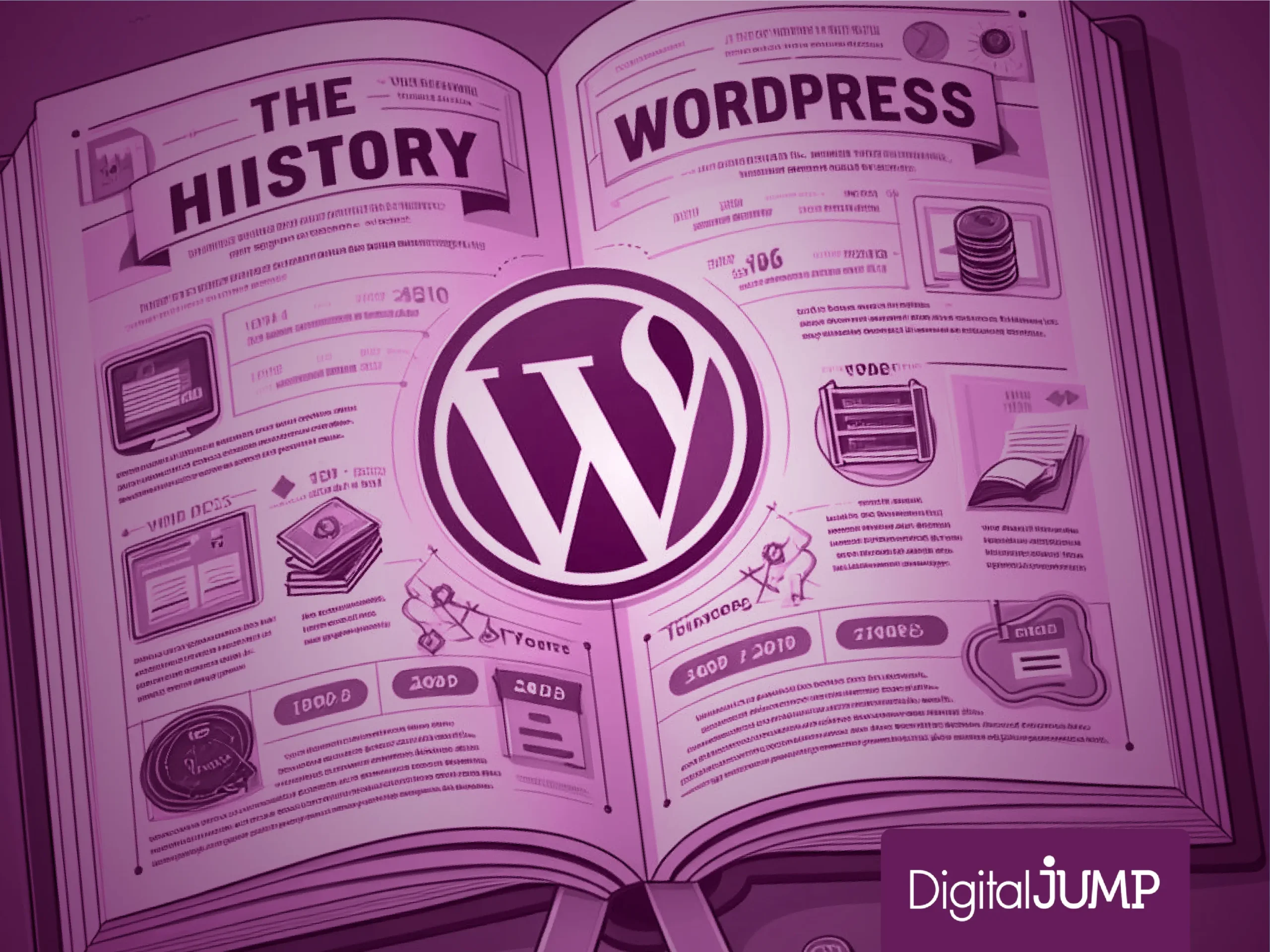WordPress is a content management system (CMS) that allows you to create and maintain websites easily and flexibly. It was born in 2003 as an evolution of the b2/cafelog project, a blog publishing software created by Michel Valdrighi in 2001. The founders of this fantastic tool were Matt Mullenweg and Mike Little, two developers who wanted to improve the b2/cafelog code and adapt it to the needs of users.
It is based on the PHP programming language and the MySQL database management system. It was established as free and open source software, which means that anyone can manipulate, modify and distribute it without restrictions. In addition, it has a large community of developers and users who contribute to its improvement and growth.

What are the most important milestones in your entire historical journey?
WordPress is a success story that demonstrates the power of free software and collaboration. It’s more than a CMS, it’s a way to express yourself and share on the web. Since its birth in 2003, various events have occurred that have strongly marked its progress on the Internet and are represented by the novelty of its recurring updates:
- 2004: Version 1.2 is released, which introduces the concept of plugins, small programs that can be installed to add extra functionality to the website. The blog comment system is also improved and support for multiple categories is added.
- 2005: With the release of version 1.5 this year, the concept of themes is incorporated, which allows you to change the visual appearance of the website without modifying the code. WordPress.com is also created, a service that offers free and automatic hosting for websites created with WordPress. Still, even today, this service is not very popular, because, like Wix or Shopify, it does not allow us to have full control of our website nor does it allow us to migrate the content to another server. Furthermore, its costs are not particularly accessible.
- 2008: Version 2.5 redesigns the administration interface and adds new features such as the media gallery, the recent comments widget and the automatic update system.
- 2009: Version 2.7 is released, which introduces the concept of metaboxes and custom post types, which allow you to customize the administration panel according to the user’s preferences. The possibility of installing and updating plugins and themes from the panel itself is also added.
- 2011: With the release of version 3.1, the custom permalink system is incorporated, which allows you to modify the structure of the website’s URLs. The administration bar is also added to the front of the website and the import and export system is improved.
- 2012: Version 3.4 introduces the live customizer, which allows you to preview changes made to the theme before saving them. Support for custom headers and custom backgrounds is also improved.
- 2016: Version 4.4 is released, which incorporates the concept of REST API, allowing users to interact with the website from other applications or services. The default Twenty Sixteen theme is also introduced and support for responsive images is improved.
- 2018: With the release of version 5.0, the new Gutenberg editor appears, which allows you to create content with modular blocks that can be moved, edited and customized. The default Twenty Nineteen theme is also introduced and accessibility support is improved.
- 2020: Version 5.4 is born, which introduces the concept of a complete block editor, which allows you to edit not only the content of the posts but also the design of the website with blocks. The user interface is also improved and new features are added such as gradient colors, social buttons and icons.
- 2021: Version 5.8 is released, introducing the concept of block patterns, which are predefined sets of blocks that can be easily inserted and customized. Support for WebP, a more efficient and web-friendly image format, is also introduced.

WordPress today:
Over the years it has become one of the most popular and used CMS in the world, with more than 40% of websites created with this platform. It offers a wide variety of functionalities and options to customize websites and also allows you to integrate them with other services and social networks.
It has been recognized as one of the best CMS for its ease of use, versatility and security. He received several awards and recognitions, such as the Webware 100, the Open Source CMS Award, the Hall of Fame CMS Award, the CMS Critic Award, etc.
It is still alive and continues to evolve and be constantly updated to offer the best solutions to users. The latest version available is 6.4.1, released in November 2023.
WordPress tomorrow:
This software does not appear to have any type of expiration as has happened with other CMS or frameworks on the market. Such is the example of Bootstrap, which today pales before the advent of more complete frameworks with better features such as Tailwind.
However, since WordPress has a huge monopoly on web pages uploaded to the network, it also carries a great responsibility. Perhaps one day the time will come for it to go into crisis, but it is also backed by a huge community of developers who, every day, work to improve the software. It is for these reasons that it would be hardly credible to see an unfavorable future for him.
For now, in Digital JUMP! We will continue working and supporting this great project, because we believe that it is a fundamental tool for the marketing and development of any company.


